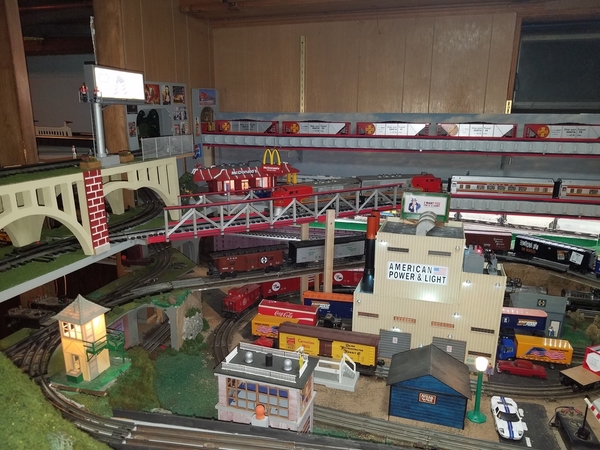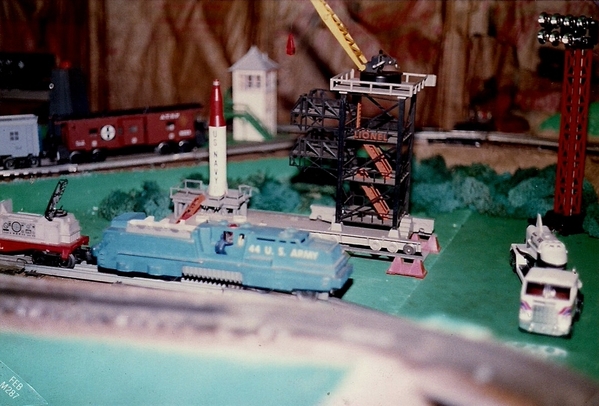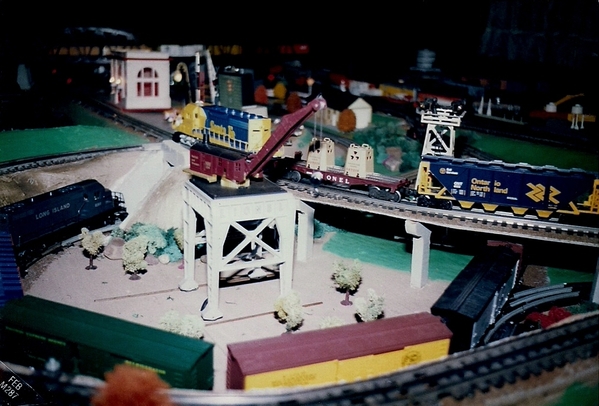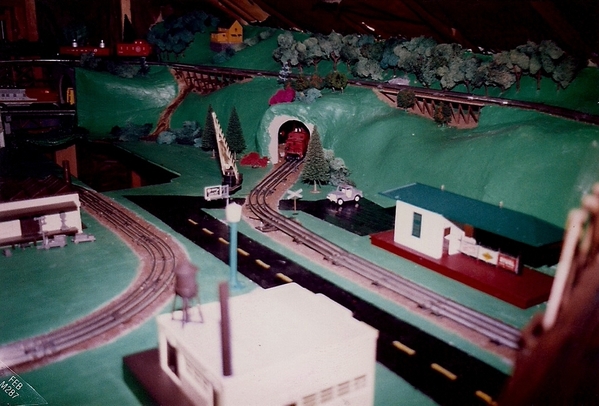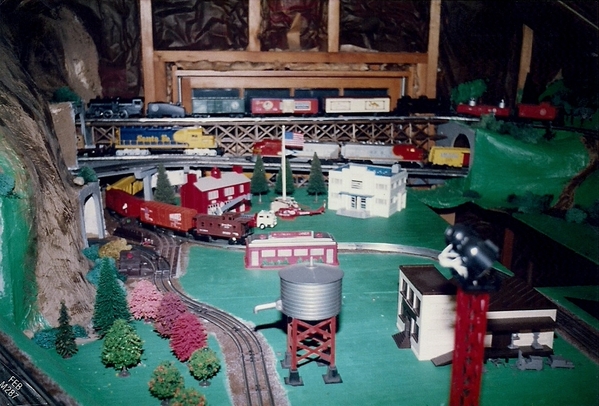Hi everyone!
Just got my postwar collection out of mothballs after 30 years in storage. I caught the bug and have started building a layout in the attic. My father, who is now 90, recently spent a week cramped in the attic with me helping me lay track. It is the father-son project we didn't finish in 1985 and I'm grateful we are finally
The layout is a dog bone, 40' x 9', with two loops and a switch yard, and with the main line elevating 5" to clear a floor joist at both ends. It is still a work in progress (see pictures). You'll notice I still have not put down track bed or anything, but I at least have the outer loop up and running so can run trains with my kids (5 and 10, they love it!).
My goal is to keep things simple. I have a ZW and would like post D to run the outer (main) line, and post A to run the inner line and switch yard. That way I can have two trains running at the same time in separate districts but without the complication of blocks. I may add blocks at some point later. Switches will be constant voltage from post B and lighted accessories will be constant voltage from post C.
I also plan to have a crossover between the loops, and here is where I have a question. After looking at length on this and other forums, I have read several places that bridging the two districts when the two sides of the ZW are at different voltages creates a dangerous fault current. Some years ago, a poster named Bob Nelson wrote:
I would advise you to arrange your transformer connections so that you can power both loops from the same transformer output terminal when crossing between loops. You can do this with a single-pole-double-throw switch to connect the center rail of each loop to either A or D. (Or even leave one loop's center rail permanently connected to, say, A, and use just one SPDT switch to connect the other loop to A or D.)
The reason for this is that, if you neglect to set the A and D controls nearly exactly to the same voltage, a large fault current will flow as the locomotive (or lighted-car) pickups connect the two loops together when traveling through your crossover. This current does not flow through the circuit breaker, so it will not trip to protect your transformer.
I wonder if someone could please walk me through exactly how to wire this up. Do I run power directly from each ZW post to the SPDT switch, and then to the track? Forgive the novice question - my learning curve is steep!
In any case, thrilled to be back in the hobby and thanks in advance for your input/feedback.
Kevin





